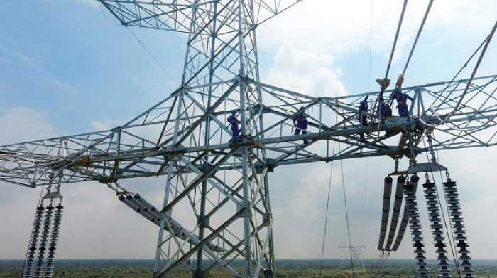The public authority intends to set out on a 10-year change methodology to move from gas to power in business, modern and private areas, and push energy-effective structures under a Rs45 billion energy productivity and protection project, which imagines energy reserve funds of over Rs500bn per year.
The task was officially cleared by the Focal Improvement Working Party a couple of days prior for dealings with the World Bank for a $150 million credit, including a $15m specialized award for limit working of the Public Energy Proficiency and Protection Authority. In any case, it was seen that a 10-year progress period was excessively lengthy and ought to be limited.
The venture’s supporters — the Service of Science and Innovation and the Energy Productivity Authority — have answered to the Arranging Commission that Pakistan’s ongoing energy-saving potential was around 10m to 12m lots of oil same — a unit of energy characterized as how much energy delivered by consuming one ton of raw petroleum.
The country’s ongoing essential energy supply remains at around 95m lots of oil same and is projected to go past 115m in 2025 at a yearly development pace of 5.8pc, as its per-capita energy utilization is supposed to increment from 405 kilograms of oil comparable to 469kg during the period. Plans 10-year change technique under a task visualizing yearly reserve funds of over Rs500bn. High energy power joined with the high and inflating cost of energy in Pakistan has serious ramifications for expendable salaries and for financial intensity.
Energy costs as of now address north of one-fourth of normal family consumption, and with progressing duty change measures expected to pay off the roundabout obligation issue, this rate would increase further. For industry, the mix of expensive and wasteful utilization of energy puts Pakistan at a critical cutthroat drawback, particularly in globally uncovered areas of the economy.
The venture means to decrease petroleum product imports, prompting unfamiliar trade reserve funds and working on the country’s financial circumstance, cut family consumptions, particularly on warming and cooling needs, and encourage a green and proficient economy, consequently supporting Pakistan’s unbiased to arrive at upper-center pay status by 2047 — when the nation turns 100. The task additionally expects to assist with meeting broadly resolved commitments objectives by diminishing 20pc of the all out projected ozone harming substance discharges by 2030. The energy area would be the fundamental concentration for discharge decrease as it contributes 46pc of the absolute outflows.
As per a review directed by the World Bank for the undertaking, a 25pc decrease in building energy use across all areas could convert into energy reserve funds of 16 gigawatt-hours, giving expense investment funds of about Rs291bn each year. The proficiency acquires by moving gas utilization to power could go fundamentally past Rs250bn each year — one more part of the multi-reason project.
Most structures in Pakistan were not built with high energy-effectiveness norms, bringing about huge superfluous energy utilization and expenses for shoppers.
Furthermore, in certain pieces of the nation, space warming is expected in winter alongside wasteful warming of water, which is one more channel on draining homegrown gas supplies. In summer, wasteful structures lead to higher cooling interest, especially during top hours, overwhelming the public lattice and requiring the utilization of costly and dirtying cresting plants.
The venture will include energy reviews and benchmarking of all huge governmentally claimed structures, exhibition of profound energy productivity retrofits of a few ‘grandstand’ structures and improvement of normalized materials and particulars to help the retrofitting of structures in the business, public and private areas. The undertaking would help the advancement of building configuration formats that can be openly given to lodging specialists, important government divisions and organizations to empower them to indicate and develop new energy-effective structures according to new “green construction standards”.
The structure area drinks 26pc of the complete gas utilization in the country, generally for space and water warming in a profoundly wasteful way at the most financed rates without guidelines and norms for machines. Oddly, admittance to the funneled gas network is 24pc, though admittance to power is more than 73pc. In addition, with gas deficiencies each colder time of year, rising gas costs and the nation’s rising dependence on imported melted petroleum gas, an energy proficiency drive turns out to be more basic.
The Public Energy Proficiency and Protection Authority has assessed that reserve funds of 10-12pc in winter and 20-25pc in summer service bills can be accomplished by utilizing inverter forced air systems. In winter, around 46 million standard cubic feet each day of gas would be saved by changing from gas warmers to inverter ACs.
This part will subsequently uphold a progressive shift from gas to power to meet warming necessities in the designated areas. This would be completed in lined up with changes to building plans and codes to guarantee further developing the energy proficiency of structures and conveying a planned methodology that considers both the warm protection of structures and furthermore the productivity of intensity and cooling administrations gave inside them.
In light of flow examination and progressing studies, the venture will include sending off an exchange plot for families and organizations to deliberately supplant their wasteful gas springs or boilers and space radiators with electrically fueled other options. This will be founded on heat siphon innovation and substitution of wasteful warming advancements and the upgradation of cycles, specifically those that advance a shift from gas to power in modern areas in light of a rotating credit asset to likewise give credit lines to families and organizations.







